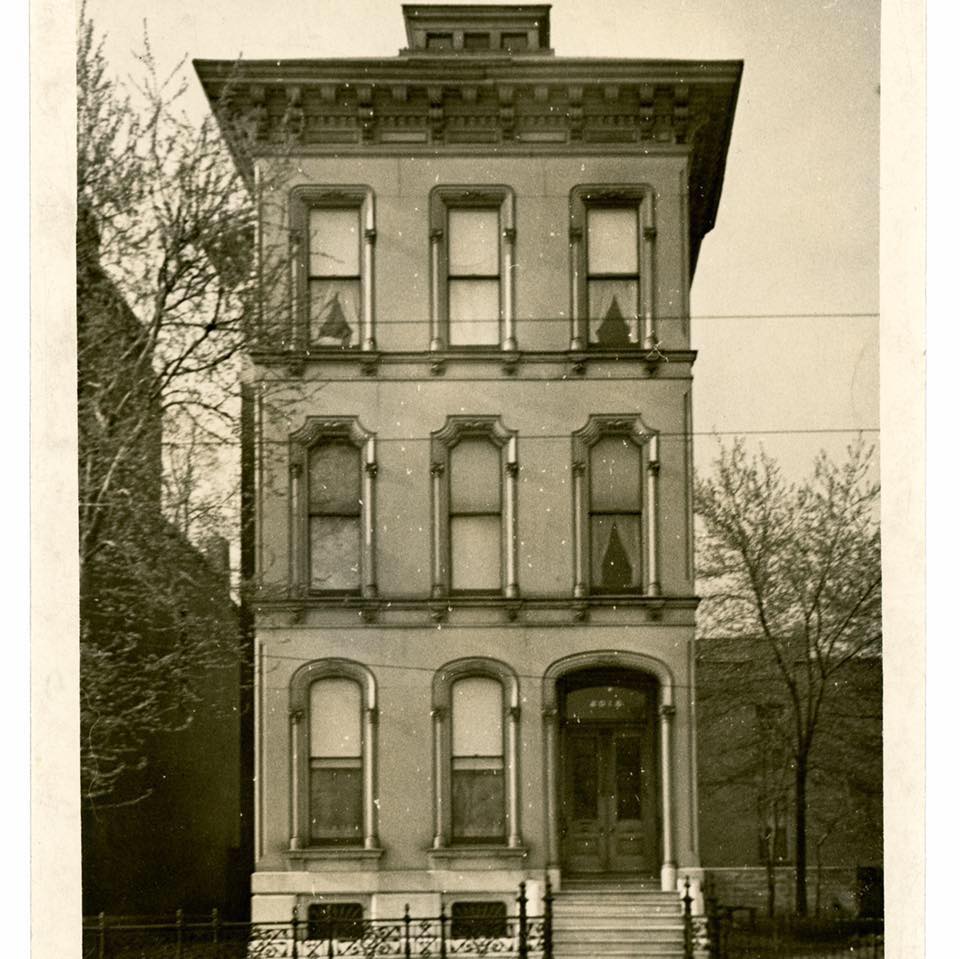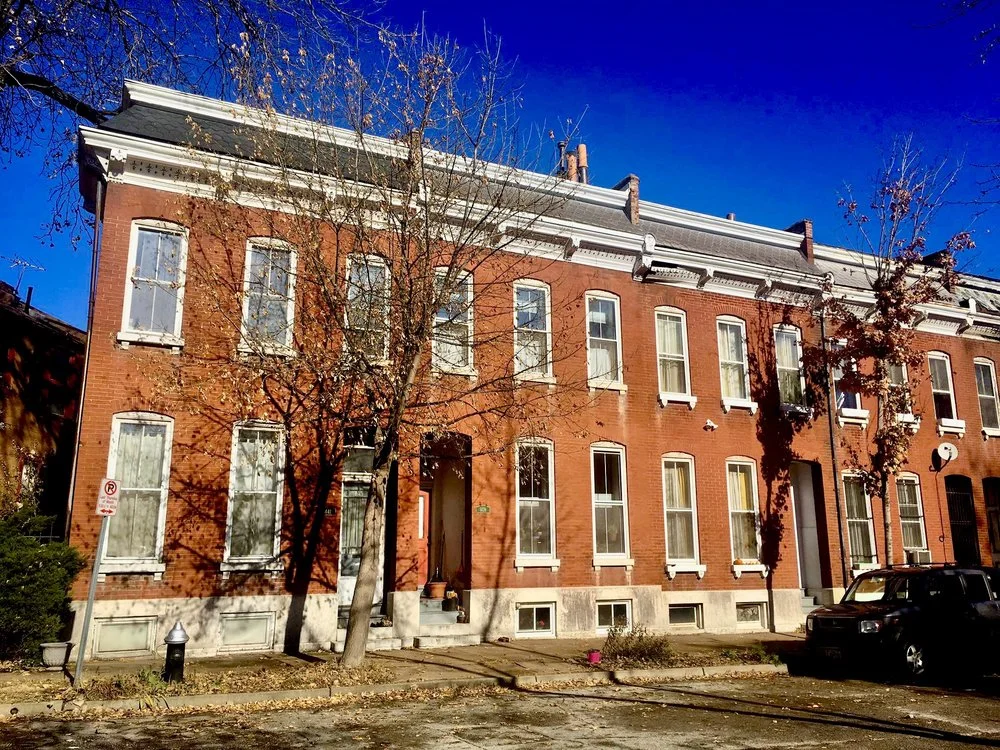1850s Federal Style Flounder
This flounder house in Old North St. Louis is among the earliest examples of the style of housing in the city of St. Louis. The simple triangular structure is one of a few different types of flounder, but in most cases, these examples were built earlier than some of the more ornate designs, generally dating from around 1840-1870. This particular example has flat limestone lintels, which were commonly used in the area between 1850 and 1860, suggesting that this house was likely from that period of time. A common myth about flounder houses suggests that they were built to trick the tax assessors into thinking that the house was incomplete, but in reality, the style was used as a way to maximize the total space available in densely populated urban neighborhoods, so that the houses could be built in close proximity to, or in some cases, even attached to the houses next to them. The style allowed for easy water runoff that would allow for the houses to be built in such close proximity, yet allowing the water to run off away from the other house. The style ended up losing popularity after about 1885, but in that time, St. Louis had hundreds of examples built, of which about 300 remain today. Of every city in the US, St. Louis has by far the most examples of this style of house, as the second highest number of examples are located in Alexandria, Virginia, which has a total of 65. While not exclusively found in St. Louis, the flounder house is one of the styles that makes St. Louis architecture stand out from most other older cities.



